Distant Water Fishing Fleets and Coastal Food Security
Goal: Build an understanding of the ecological and socioeconomic costs of unsustainable fishing by distant water fleets (DWFs) with a particular focus on the ways that DWF activities impact domestic food security in the countries where they fish.
Collaborators: Austin Humphries (URI), Elin Torell (URI Coastal Resources Center), Lauren Josephs (URI Coastal Resources Center), Heidi Schuttenberg (US Agency for International Development), Kelvin Gorospe (US Agency for International Development)
Project Duration: 2022-2023
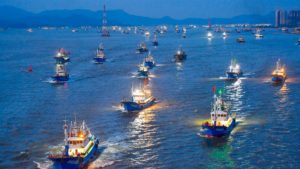
Distant water fleets (DWFs) are those vessels that fish far from their home waters, often within the national waters of other countries. They have been identified as one of many challenges to recovering or sustainably managing fish stocks. In particular, these heavily-subsidized industrial DWFs may decrease fish availability for domestic fleets, reduce revenue to local economies, and diminish opportunities for domestic fisheries to address the food security needs of nations where they operate. The world is not on track to meet the United Nations Sustainable Development Goals on food security and improved nutrition, and climate change is only forecasted to make meeting these goals more difficult. By approaching this research on DWFs through the lens of food security, our project will contribute to the broader conversations on both sustainable fisheries and the importance of access to high-quality, nutritious food for coastal communities around the world. The work will build on research at the University of British Columbia and the Sea Around Us project and will focus on the following priority geographies: Peru, the Philippines, Madagascar and Micronesia. This project is part of the Feed the Future Innovation Lab for Fish; learn more here.
Funding: US Agency for International Development (USAID)
Modeling and Mapping Fishing Impact and Fish Biomass
Goal: to develop models and high-resolution maps of fishing impact and reef fish standing stock to support coral reef management and marine spatial planning initiatives
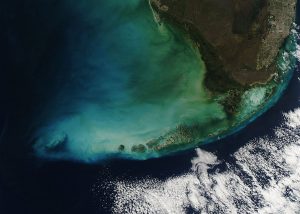 Mapping and modeling fishing impact in the Florida Keys and Eastern Caribbean regions
Mapping and modeling fishing impact in the Florida Keys and Eastern Caribbean regions
Collaborators: Alastair Harborne (FIU), David Kochan (FIU), Robert Brumbaugh (TNC), Kathleen Freeman (TNC)
Project Duration: 2019-2020
In collaboration with The Nature Conservancy’s Mapping Ocean Wealth Initiative, our team is compiling biophysical and socioeconomic data relevant to South Florida coral reef fisheries and generating spatial data layers in ArcGIS. I am developing a model using a boosted regression tree statistical approach to estimate fishing impact and fish biomass on these coral reefs at a fine spatial scale (1 ha resolution). I’m also using these models to predict fish biomass under a range of management scenarios to inform ongoing decision-making by the Florida Keys National Marine Sanctuary, Florida Fish and Wildlife Conservation Commission, and the National Park Service. Models and maps will be completed and available on the Ocean Wealth data portal by 2021.
A short project description is available here. And our initial Florida report is available here. Both our first manuscript “Identifying the drivers of coral-reef fish biomass on Florida’s Coral Reef to assess potential management actions” and second manuscript “Factors influencing the biomass of large-bodied parrotfishes in the absence of fishing on coral reefs in Florida, USA” are working their way through the peer-review process.
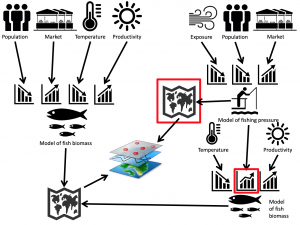 Mapping and modeling fishing impact in the Eastern Caribbean
Mapping and modeling fishing impact in the Eastern Caribbean
Collaborators: Alastair Harborne (FIU), David Kochan (FIU), Mark Spalding (TNC), Kate Longley-Wood (TNC)
Project Duration: 2019-2020
Similar to the work detailed above for Florida, I am developing models and maps to describe the spatial distribution of fishing impact on coral reefs across the Eastern Caribbean, and create current and predictive potential maps of fish biomass. This work is being done in collaboration with The Nature Conservancy’s Mapping Ocean Wealth Initiative and is designed to directly inform the upcoming Organization of Eastern Caribbean States’ marine spatial planning process which includes St. Lucia, St. Kitts and Nevis, Grenada, Dominica and St. Vincent and the Grenadines.
Coupled Human and Natural Fishery Systems
Goal: to integrate an understanding of human dimensions into our approach to fisheries management
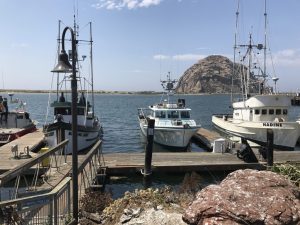
Social-ecological coupling in the nearshore fishery of central California
Collaborators: Carrie Pomeroy, Mark Carr
Project Duration: 2016-2019
Scientists, managers and resource users are increasingly aware of the importance of social-ecological coupling in determining fishery sustainability. In this project, I use qualitative (information from semi-structured interviews) and quantitative (landings and ecological monitoring data) data to characterize the nearshore fishery as a coupled social-ecological system. I employ market, governance, ecological and environmental data to explore relationships linking biophysical, economic and management components of the fishery, ultimately providing information for its adaptive management. This work is being done in with assistance from members of central California’s nearshore fishing fleet and the California Department of Fish and Wildlife.
Find the results in my dissertation here.
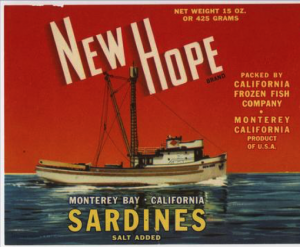 Managing small-scale commercial fisheries for adaptive capacity
Managing small-scale commercial fisheries for adaptive capacity
Collaborators: Stacy Aguilera, Jennifer Cole, Elena Finkbeiner, Elodie Le Cornu, Natalie Ban, Mark Carr, Josh Cinner, Larry Crowder, Stefan Gelcich, Christina Hicks, John Kittinger, Regecca Martone, Dan Malone, Carrie Pomeroy, Rick Starr, Sanah Seram, Kenny Broad
Project Duration: 2013-2015
Focusing on the wetfish fishery (anchovy, sardine and squid) in California, we explored factors that lead to shifts in fishery dynamics, and ways that fishermen adapt in the face of economic and environmental disturbances. Our findings indicate that fisheries management would benefit by promoting regulations that allow fishery participants to shift effort between and among fisheries to encourage adaptive capacity in the fishery’s social-ecological system. These flexible, interconnected fishery systems can ensure that fishermen and fish stocks are resilient to continuing climatic, market and governance changes. This work was coordinated by Stanford’s Center for Ocean Solutions.
Our PloS One open access publication, led by Dr. Stacy Aguilera, can be found here.